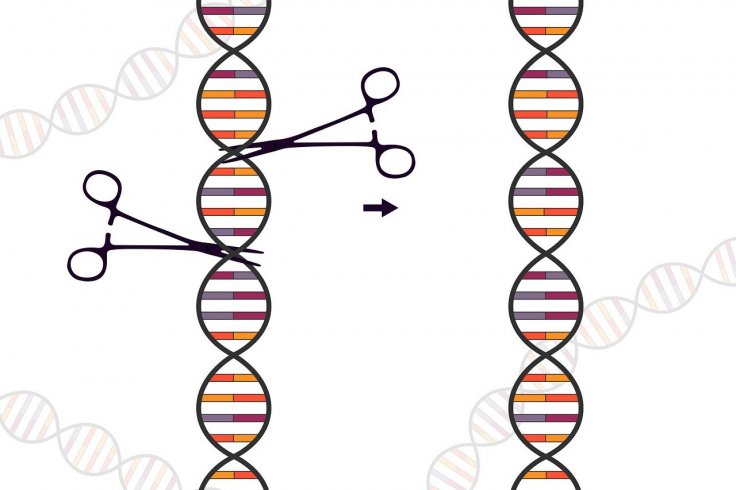Ever since Stanley Cohen and Herbert Boyer pioneered genetic engineering in 1973, it has slowly gained popularity. Despite its potential misuse, many scientists believe it could be the answer to eliminate genetic disorders and even many other diseases. While research in the human genome has been restricted, many are trying to apply similar techniques in plants to fight climate change.
Canadian forest genomics scientist Armand Seguin began his journey in genetics two decades ago and modified a poplar plant's DNA, making it immune to pests that wreak havoc, killing the plant. "To me, this wasn't something we were planning to develop at a larger scale, but it was proof of a concept. We proved that it was feasible," Seguin said. Now, there are hundreds of such genetically-engineered trees in the research station in Quebec City.
Engineered Trees to Fight Climate Change
For years, scientists have recommended planting more trees to fight climate change. With more trees, the rate of photosynthesis will be more and will help in reducing carbon dioxide from the atmosphere. Apart from that as the mechanism produces oxygen and converts carbon into biomass, it will lead to a reduction in temperature. The carbon will be stored in leaves, trunks and soil, increasing natural carbon reserve called carbon sink.

The idea of planting more trees is great but it has some limitations. A fully grown tree produces around 260 pounds of oxygen each year and removes 48 pounds of carbon dioxide. But to get to that point, it takes years. Hence, scientists believe plant DNA can be altered for it to grow faster, bigger apart from making it resistant to diseases — similar to Seguin's idea. Some offer another solution, making trees that can pull more carbon from the atmosphere.
Hence, genetic modification could be one solution that will not only "improve photosynthesis" but those plants will also be more "resilient to the environment." "Now there are solutions where you can genetically modify organisms to reduce the use of chemicals and improve carbon sequestration," Seguin told the CBC.
Such an idea is also not new. Recently scientists had discovered a CRISPR gene-editing technique for corals to help them survive climate change.
Depleting Carbon Sink
However, some trees go through a process called respiration in which it takes in oxygen and produce carbon dioxide. The process happens especially in winter when there is not enough sunlight for photosynthesis. Apart from that, due to increasing forest fires and pest infestations, trees lose the carbon sink stored in the stem. That sends a huge amount of carbon dioxide back into the atmosphere.

While a different group of scientists is trying to mitigate forest fire risks by applying artificial intelligence and other scientific models, pest infestation is something that Seguin can deal with. Generally, pests die off during winter but with climate change and global warming, many are surviving into spring, harming the forest ecosystem, said geneticist Val Giddings, who is a senior fellow at the IT and Innovation Foundation, an American think-tank.
According to a Canadian government report, a species of Bark beetle called pine beetle has devastated over 18 million hectares of forest in the last 30 years in the U.S. and Canada. With pine beetle infestation, plants die and dry up, increasing the chances of a forest fire. To counter that, genetic modification in plants could help stop the infestations and reduce the depletion of carbon sink.
"Bark beetles are now surviving better and they're moving their range north. But if you could figure out some way to gene edit trees in these forests so that they would resist the bark beetle, that would be a huge plus," Giddings said.

Not All Agree
In recent times, genetic engineering has advanced with the introduction of CRISPR. It helps in precise gene editing without needing to introduce foreign genetic material. It is a tool that can help scientists like Giddings and Seguin to alter plant DNA and fight climate change.
However, many scientists are against the idea as gene edits always don't necessarily produce expected outcomes. They point towards the CRISPR-Cas9 technology of gene editing. Many genetic engineering using the technology has resulted in lethal genetic mutations in animals and plants as, during the process, inaccuracy could lead to deletion in genetic material.
Lucy Sharratt, a co-ordinator of the Canadian Biotechnology Action Network, is one of the scientists against genetic manipulation. Her organization raises awareness about issues in genetic engineering in food and farming. "If we start genetically engineering more plants and animals, algae and trees, where is this leading, this remaking of organisms, because we cannot as human societies reorganize ourselves to stop the destruction of biodiversity," Sharratt said.









